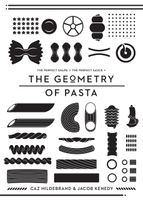Advertisement
Ravioli
By Caz Hildebrand and Jacob Kenedy
Published 2010

Stuffed pastas have trickled down to the populace from the kitchens of (predominantly northern) royal courts since medieval times, and still hold a special place, especially on feasting and celebratory days in cuisine across Italy. None has made the transition more completely than ravioli, made from two squares of pasta pressed together with a filling trapped inside. They are a popular pasta, so claims to their invention are numerous: Cremona lays one claim of origin; it is also possible they developed from manti under Arab influence in Sicily after the 1100 invasion. Genoa holds the same belief, insisting the name stems from rabilole (‘thing of little value’ in dialect), referring to meals impoverished sailors improvised, turning scraps of leftovers into a whole meal of pasta. The name might also come from the medieval rabbiola (from Latin rapa, ‘root vegetable’) – ricotta and vegetable dumplings wrapped in turnip tops, or most likely simply from the Italian avvolgere, ‘to wrap’.



